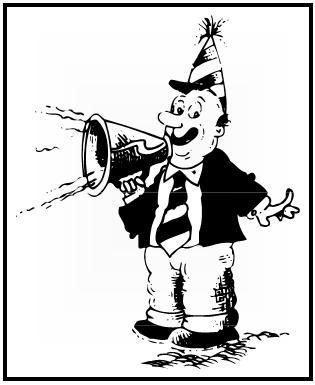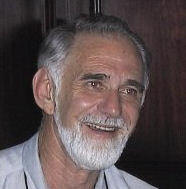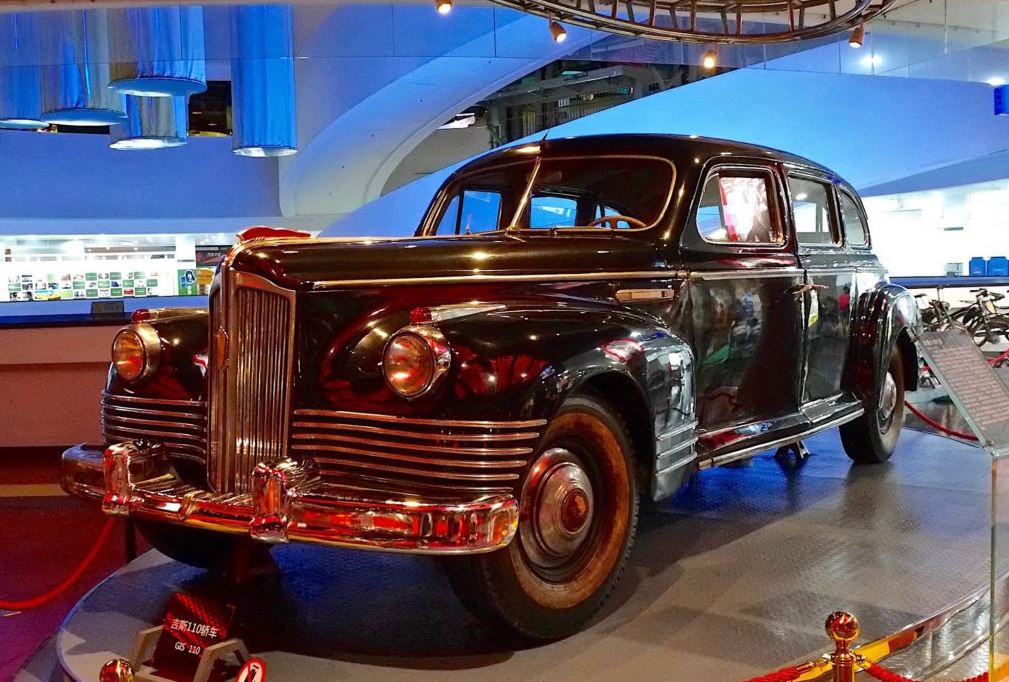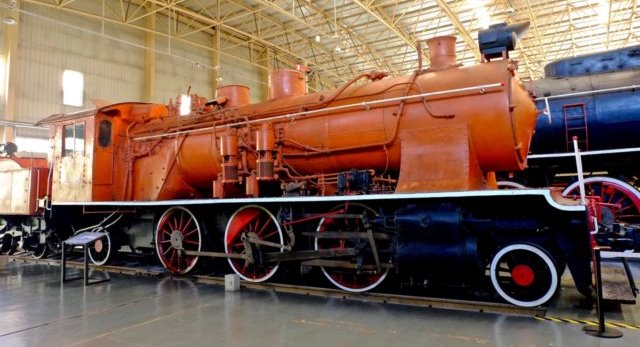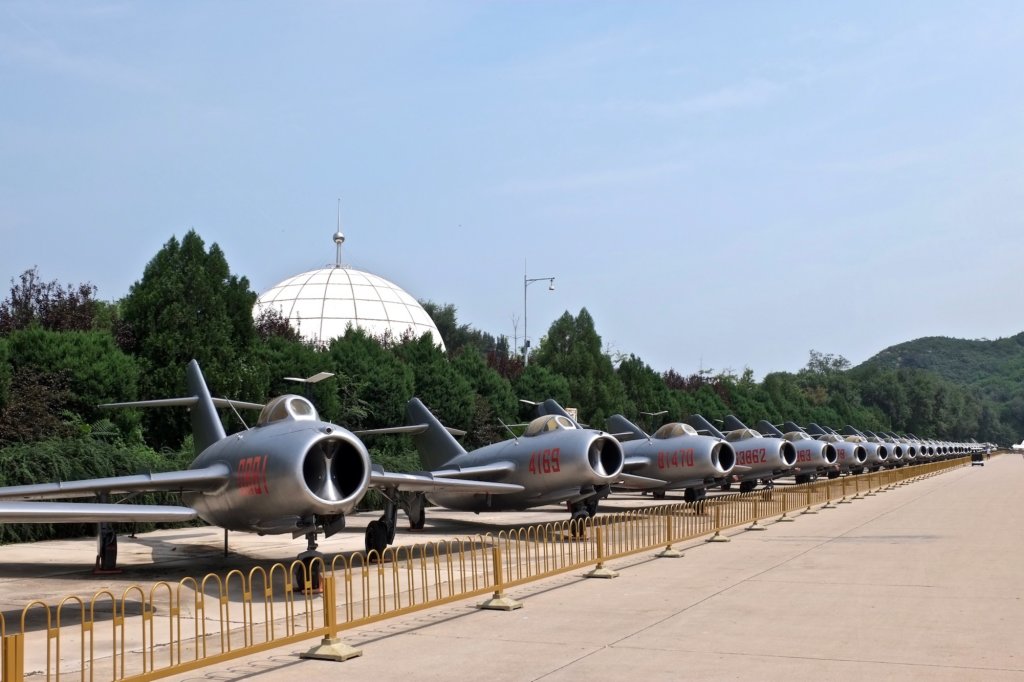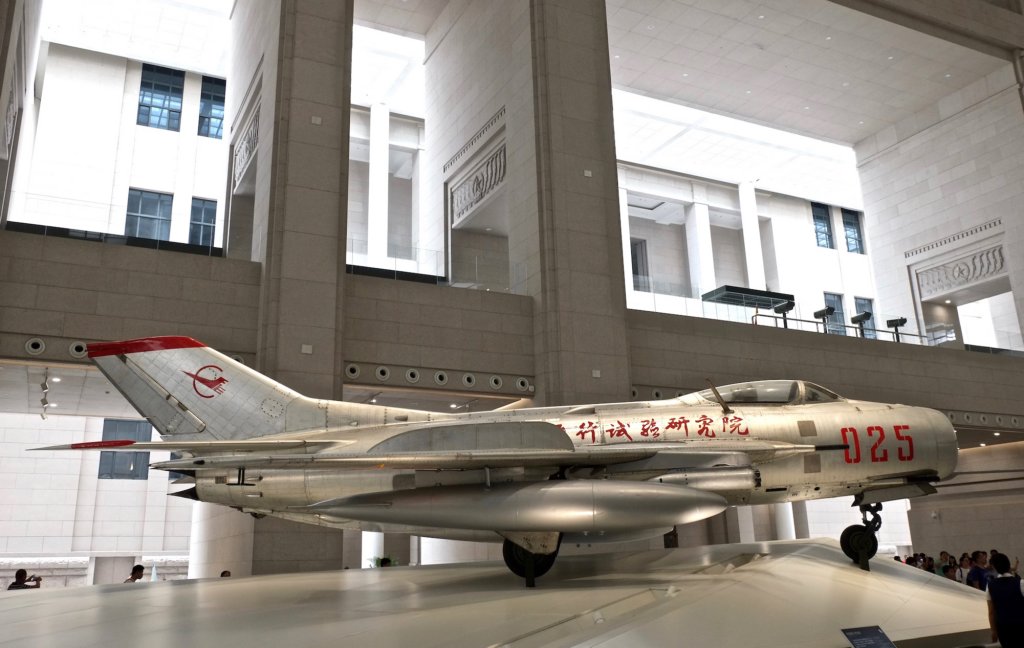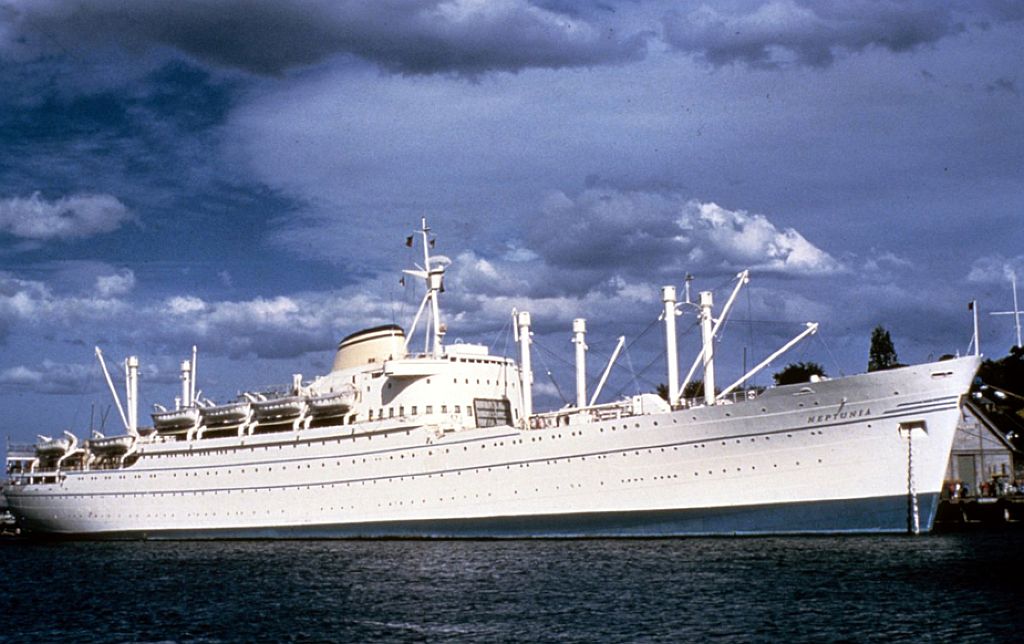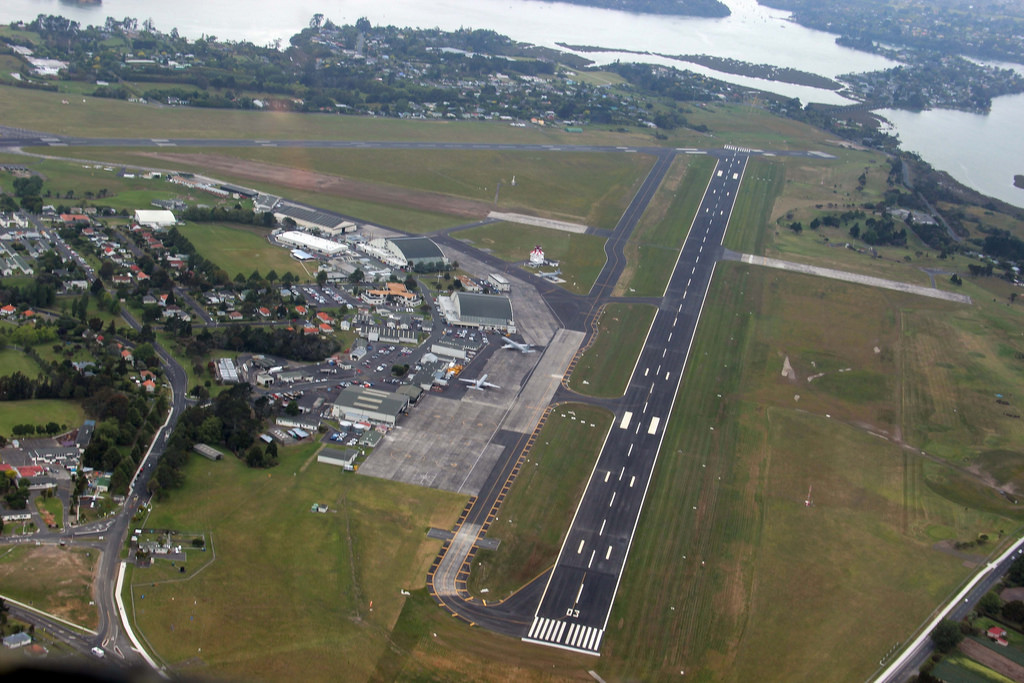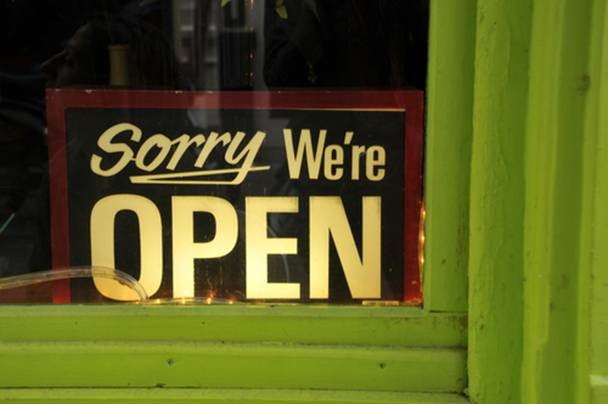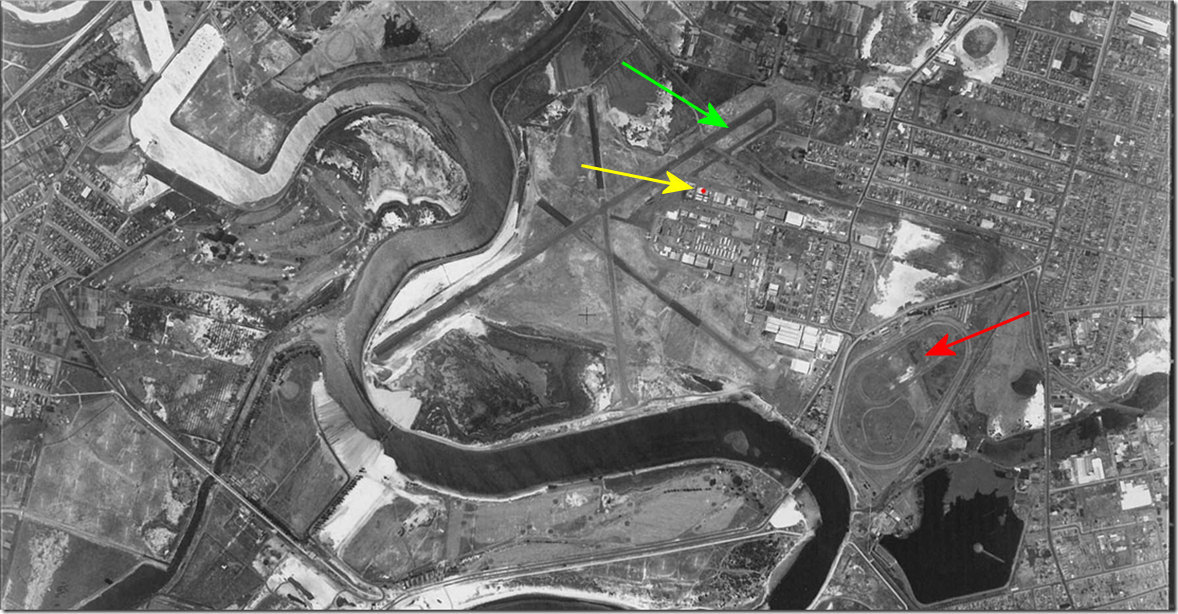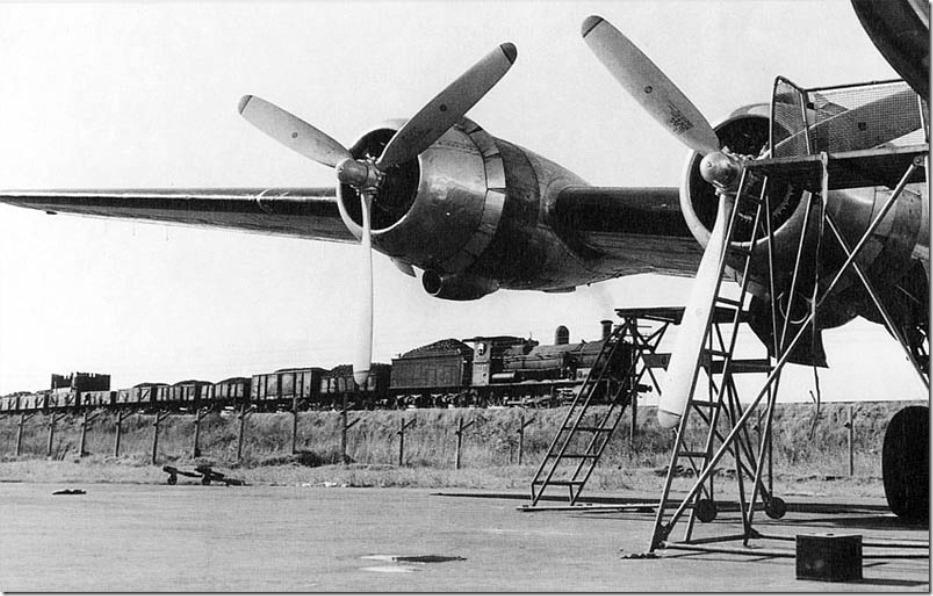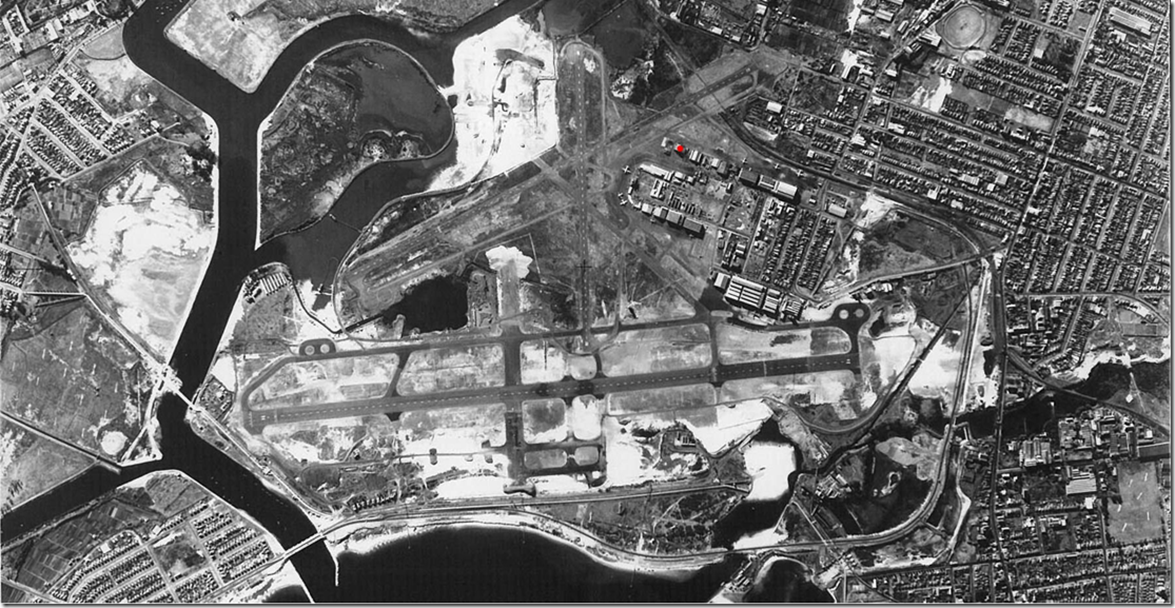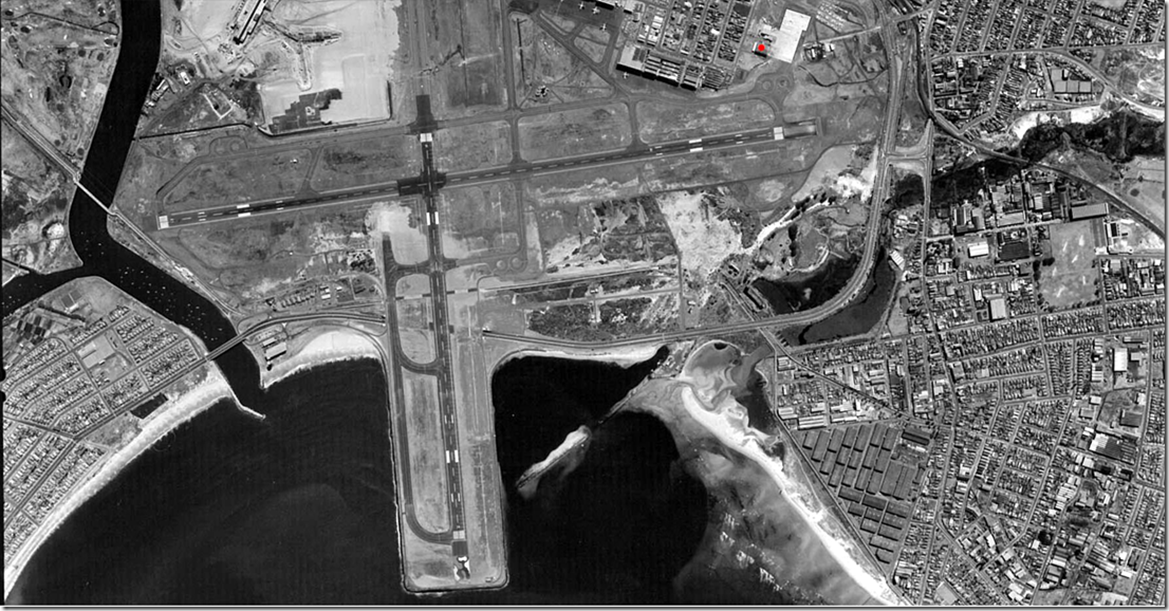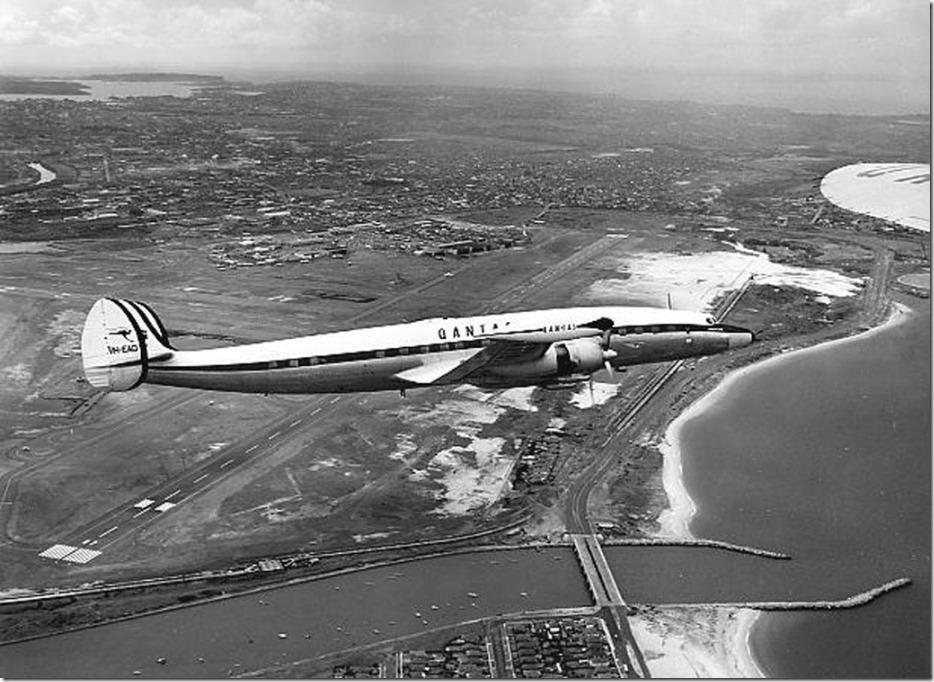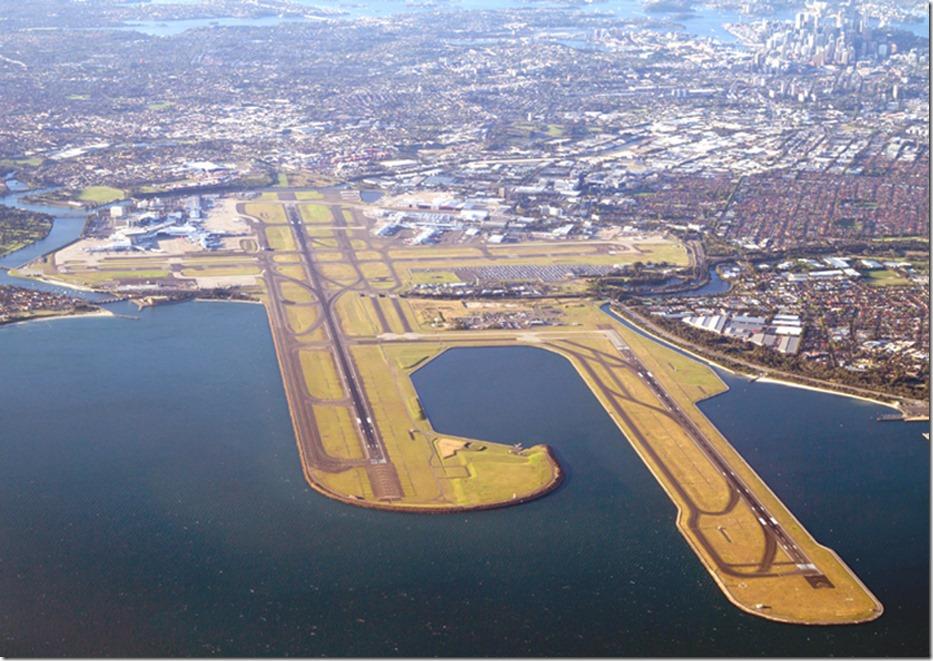|
|
||
Privacy Policy | Editorial Policy | Profit Policy | Join the Association | List of Members | Contact us | Index | Links |
||
|
Back Go to page: 1 2 3 4 5 6 7 8 9 10 11 12 13 14 15 16 17 18 19 20 Forward
|
||
|
Your Say!
|
||
|
While the Association does not necessary agree or disagree with everything on this page, we do respect the right of everyone to have their say.
|
||
|
Chinese Museums – Frank Alley.
Frank says, “In late August this year (2018) I returned to China for a 2 week visit with my Shanghai born wife, perhaps for the last as I am now 76 years old. Those who know me will remember that I lived and worked in China from 1998 to 2006 before returning to Oz. (See HERE).
I wanted to see some museums that I had missed during my time there. This time I managed to see in Beijing the China Aviation Museum, Military Museum, Auto Museum and Railway Museum. It was some 12 years since I had been there and I was staggered by the changes. Our first and final stop was Shanghai with a trip to Beijing there and back on the fast train which cruised at speeds over 340 km/hr, silent and comfortable, cheaper than flying and a damn sight easier.
I could not see the Naval Museum in Shanghai because it is on an active naval base and foreigners are banned, but apparently it is OK for Chinese to visit. I was offered the opportunity to go to Tianjin, east of Beijing and see the Liaoning, aircraft carrier. I decided against that because I knew from past experience if I raised a camera there would be hysterics around me.
Just a few observations about the modern China: The everyday technology is well advanced compared to what we have in Oz. Facilities for use of internet for all manner of things are terrific. The program WeChat can be used for so much, including paying for your breakfast sold to you by a peddler on the street. Everybody has a grand smart phone and they use them. My experience in Oz with people walking whilst staring at their phones was quite different. In Oz there is a good likelihood you will have a collision. On a subway station platform in China you might have say a 100 people advancing toward you, all looking at a screen, but no one will collide with you. They just seem to know what to do. Sitting in a taxi can be quite disconcerting in the heavy traffic in Shanghai and Beijing and Rafferty’s rules seem to apply. No one bullies their way and they are prepared to make way for both vehicles and pedestrians. It just works, but I doubt if I would have sufficient patience.
Food in restaurants was fabulous and most menus are bilingual, Chinese and English with pictures of the dishes. And by Oz standards ridiculously cheap. In Beijing a meal with 4 dishes which might be too much for two people to eat and including my beer would come to $30 AUD at the most. Taxis were also cheap. They also have a Uber type system for private drivers. If you have the right app on your phone, you make a request. Then a reply comes from a driver with a quote, a picture of his car and the number plate, all connected to GPS so you can see where your taxi is.
To get to the aviation museum is not easy and we decided to get the subway as far as possible and hope to get a taxi. The taxi took 25 minutes and came to $14 AUD and the driver gave us his phone number so we could call him when finished and there he was at the entrance later….another $14 for the return trip. Petrol in China is about $1.50 AUD per litre, so I don’t know how they make a living.
Entrance to the Aviation and Military Museums is free, except that they charge 20RMB ($4.00) for the indoors exhibition at the Aviation Museum. If Jane my wife had been prepared to wait in the heat while two Chinese men argued over who would pay the entrance fee, I would have had to pay even less because I am a senior!!
By the way, at the Shanghai Museum I saw an ancient scroll of women playing what looked like golf. The Chinese claim that golf was invented in China, although the game as we know it came from Scotland.
The Auto Museum is housed in a modern building in an outer suburb of Beijing and can be reached by subway with a 700m walk at the end. Cost of entry is $4.00 AUD and is quite crowded. It seems to be set up with children in mind as there is a bit of educational activities or exhibits, such as an ‘exploded’ car, disassembled and hanging in the air. The first cars you see are what would have come out of Russia and Chinese manufacture based on Russian design. It’s worth noting that until the 1949 revolution, cars were right hand drive, but after the Russian influence they became left hand drive.
Most of the car pics were taken with my mobile phone, but a few were from a proper camera. The lighting was very harsh and difficult for photography.
What is exhibited is in pristine condition and cars are displayed on a number of floors. One large area is devoted to examples of modern engines. On another floor they have some classics like the Dino Ferrari, Porsche, XK120 Jaguar, old Bugatti, Model A and T Fords and a quaint little Subaru, the Citroen 2CV.
Apart from the Jag, what floored me was the V12 Lincoln, the old Rolls Royce and the Cadillac. One wonders who originally owned these cars and did they have to publicly confess their sins during periods of upheaval, such as during the Cultural Revolution.
A bugger of a place to get to, there being no taxis in the area, or at least none we could find, but well worth the visit.
You can see the pics HERE.
Railway Museum. The weather was hot and we were buggered, so we got a taxi from the hotel, after all, taxis were very cheap compared to Australia. Now Beijing taxi drivers have a reputation for being a bunch of cheats and that was the case in years past. But now it is more difficult to rip off a customer because everyone has a smart phone with a GPS. While I stared out the taxi window at the astonishing architecture whizzing past, Jane had her eyes glued to her GPS, monitoring where were going. Jane is Shanghainese and like most of her city folk, has a natural distrust of those from other cities. Ask a Shanghainese a question in Mandarin and you are likely to get the answer in Shanghai dialect.
Cost of entry to the cavernous hall was $4.00 AUD. They had fans placed around the exhibits and you could always find somewhere cooler. Steam locomotives everywhere, some of them would have been in service only 20 years ago. There were the diesels and more modern types. A number of exhibits were originally imported from overseas, such as from France and Belgium. The absence of really old trains suggests that what we might call modern trains came rather late to China, probably after the revolution of 1949. In the time of the last emperor, at the turn of the 19th to 20th centuries, technology was banned, so railway system would have lagged behind what was happening around the world. I can remember reading in a book written in the early 20th century by a priest in Shanghai about how the government complained about the number of Chinese being run down by the rather slow moving trams in Shanghai. It seems there were no ‘Shanghai Dodgers’ like those Brooklyn Dodgers of New York.
The last pic is of a device for the disposal on bombs. It would seem that if a bomb is found on a train station and cannot be defused, it is put into this sphere, locked and detonated.
Security, whilst not on the same level as at an airport is quite ever-present in train stations. Everything gets scanned on the way into the platforms.
You can see the pics HERE.
Aviation Museum. There are apparently over 300 aircraft on display, many duplicates. Note the row of MiGs. Some of the aircraft are western and some Russian and some Russian designs and others of local Chinese design and manufacture. The DC3’s may be from WWII that had been used by the Americans to supply the Chinese nationalists (Guomindang) under Chiang Kai Shek by flying over the Himalayas from Burma to China. The Mustang may have been one of the ‘flying tigers’ aircraft. There is a MiG15 from the Korean war wearing 9 stars. Only 4 represent kills and the other 5 were ‘damaged’ and I don't know what the target aircraft were. They may have been fighters or bombers. There was one Chinese pilot who had 6 confirmed kills.
I can’t read Chinese and my wife was getting a bit sick of all my requests for translations, she not being the least bit interested in military stuff, but very patient with me nevertheless. And it was bloody hot.
There are two bombs displayed under a bomber indoors, one is a thermonuclear device (hydrogen bomb) and the other a fission device (atomic bomb) and by the shape of it I would suggest a plutonium bomb, not an enriched uranium type.
The aircraft outdoors were suffering a bit from exposure, but those indoors were in beautiful condition. I was intrigued by the B29/50 types with different engines, one aircraft being an AWACS type. A couple seemed to be electronic reconnaissance aircraft and indoors there were what I guess were photographic pods on aircraft. Aircraft guns shown were 23mm, 30mm and 37mm calibres.
The strange looking projection from the front of MiG types I suspect is some kind of mid-air refuelling probe.
The museum seems to be on a former airfield with the original hangers built into the side of the hill.
You can see the pics HERE.
Military Museum
In an outer suburb of Beijing and can be reached by subway. The building was a gift of the Russians and is typical of that brutish communist style. But fabulous inside.
Everything on display is in pristine condition. On the day we were there the top floor containing small arms was closed. Because entry is free and it is not too hard to reach, there are massive crowds. The security people actually stop entry every so often so that it will not get too crowded inside.
The Sabre, Shooting Star and Mustang were from Taiwan and I wonder how they were obtained. In each museum there was the wreckage of an American supersonic pilotless reconnaissance aircraft which had come down in China. There is even a Japanese anti-aircraft gun from WWII. And an anchor from a Chinese ship sunk during the Opium Wars of the mid 19th century.
Having recently read some books on the Russian front in WWII, I was pleased to see a T34 tank with its wide tracks (this apparently gave advantage on soft ground). That tank on display was North Vietnamese captured during the brief war between North Vietnam and China during the period of Deng Xiao Ping as Chinese leader, who famously said that it is OK to be rich and promptly became rich and sent his kids to the US for education. He’s also the guy who turned the army loose on the students in Tiananmen Square.
The missiles lying flat are anti-shipping types. The big red gun with railway tracks for traversing was made by Krupp in Germany. I think it is a fort gun for anti-shipping.
Despite all the photography I did, not one person accused me, as they had in the past, of being a western spy. Things had changed.
You can see the pics HERE.
|
||
|
|
||
|
|
||
|
Jacqui Lambie.
Laurie Lindsay says, “I have recently finished reading Jacqui Lambie’s, warts and all, autobiography, “Rebel with a Cause”. Jacqui is as rough-as-guts, but her heart is in the right place, especially where veterans are concerned. She spent 10 years in the Army and was given a medical discharge. She then spent the next 10 years fighting DVA over compensation, to the detriment of her financial, physical and mental wellbeing. When she became a senator she spent a great deal of her time investigating DVA and in my opinion is the reason why DVA’s attitude towards the ADF community has changed so much recently.
I commend the book to all your readers. You can get a copy HERE”.
Toilet Roll beat-up!
Paul Laing wrote, he said: “I am looking for a way to find out who the names of the crew were who flow over the Ship Oceania in 1952 and a dropped a roll of toilet paper in an endeavour to communicate. My father Colin Laing (1922-2008), was a Pilot with 11 Sqn flying Lincoln's, Neptune's and Dakota's based at Pearce (1951- 1954). He told me the 'Oceania toilet Roll" story many years ago. I am trying to find out if he was part of that particular Aircrew.
From what I can gather, at the time of the 'Oceania toilet Roll Incident" in 1952, actual date unknown, 11 Sqn had only two barely serviceable Mk.30A Lincoln's; the A73-27 and A73-26 that may have been conducting patrols over the Indian Ocean. A73-27 was undergoing major servicing from June 1952 to August 1952 when it was received by 10 Sqn. A73-26 similarly in March 1952 was undergoing major repairs and it too was received by 10 Sqn in August 1952. I believe the first two P2V-5 Neptune's A89-301 and A89-302 arrived early November 1951 which would have overlapped service with the Lincoln's. The next two Neptune's, A89-303 and A89-304 arriving early October 1952.
The Ship Oceania was in Fremantle in May, August, October and November 1952.
If the incident happened early in the year it may have been a Lincoln crew, however, with the many conversions that had to happen it is more than likely a Neptune crew”.
We asked John Laming if he could help, this is his reply: “I can't help you on that one although during a goodwill visit to New Zealand in a Long Nose Lincoln circa 1955 we beat up Hobsonville RNZAF base (Auckland) and threw out lots of toilet rolls from the rear turret all over their beautiful green grass airfield.
I suggest Paul contact the following website and they will send the service records to him. I did that about 20 years ago for my own Service Records and received the lot in a big hard copy file:
http://www.defence.gov.au/Records/ExService.asp”
Terry Stevens writes:
With the risk of being called a racist, may I ask a question??
Something that has intrigued me since the grandson of our Queen arrived, our indigenous brothers and sisters call us invaders and call Australia Day, Invasion day and there are protests and all sorts of things going on and demands for date changes, etc, etc, etc, BUT, when a descendant of the ruler of the country that "invaded" this country, turns up, what happens? Smoking ceremonies, welcoming ceremonies, dancing and presentations and general kissing of the royal bum by said Indigenous brothers and sisters.
So, I’m confused, all of us who live here, were born here and have family ties back generations, are the invaders, but the descendants of the actual person this land was claimed for, are treated like rock stars.
Is there a bit of hypocrisy going on here, or am I not smart enough to see the real picture??
Radschool Site.
Ed Smith says: “I came to the site looking for Reg Furlong and found many names that I was at Radschool with. I have lived a charmed life and as Gary Broughton wrote, ‘it was an interesting time at Radschool, Laverton’.
Steve Kershaw was washed out to sea one-day scuba diving at Queenscliff. Reg and I were attacked at Anglesea by stingrays while diving at 10M and we got Reg into a Lifesaver boat while I swam the 1km back to shore. My speargun was still in the Stingray that got Reg and so other guys went out and got it. That happened in the same month that Steve Irwin was killed and now today I read another person has died from a stingray attack. I don't think it an attack as such on humans, it's their mating season.
After 482 sqn, Butterworth and more 482, I went on to work in medical at GE; CT, MRI and Nuclear medicine then Pathology at Bayer and the Operations management at Optus and Telstra. A few years in Darwin put lots of $$ in the bank and setup retirement in 2010 to Thailand. Now a second retirement at Hervey Bay in 2017 puts the icing on the cake.
Many thanks to every single moment in the RAAF and every single person I met, it set me up to manage the world in which we live.”
Sydney Airport.
Adrian Heinrich sent us this, it is very interesting!
Sydney Airport was its original name but in 1936 it became Kingsford Smith Airport. The locals and aviators always called it Mascot aerodrome. Those that worked there referred to it as KSA, Kingsford Smith himself always called it Mascot, so Mascot will do for this article.
This is not a history of the aerodrome and later airport development at Mascot, which became known as Kingsford Smith Airport (KSA). It is something for old aviators to look back at an airport they spent a lot of time operating in and out of and then show the vast difference in the place from the end of WW2 to when they probably first flew in/out of Sydney Mascot as kids.
This is not an airline history either, but rather a look at the airport after WW2, the old runway system (and what survived) and the lay out. How the railway line crossed 22/04 near the present Qantas maintenance hangars and the work that was done to enlarge the aerodrome area. Mainly the immense amount of work done between 1947 and 1953 to divert the Cook’s River and many tributaries to the west of the airfield and be able to enlarge the area for runways and facilities.
Seemingly unconnected to this development (but a consideration) was a crash off Mascot on the 19th July, 1945. There were hundreds of military crashes in Australia during the war but the July 1945 crash, by the RAF, north of Brighton le Sands is important. This dreadful crash occurred about a mile off the SW end of Runway 22. A Royal Air Force Consolidated C-87 Liberator Express (a modified B-24 bomber; no turrets, no guns, no bomb gear - freight compartments and 15 passenger seats) took off from Mascot’s Runway 22. The aircraft failed to gain any altitude after take-off. It was very heavily loaded with fuel. Apart from 12 POB, details of freight or other payload is unknown.
Their destination was Manus Island, Territory of PNG. A staggering 1925 nautical miles away (3564 km). Questions were asked: why not plan via Townsville with half the fuel required? It was opined that an extra 1000 feet of runway might also have made the difference. The aircraft clipped trees north of Brighton le Sands, crashed and exploded. Houses for miles around were shaken. Twelve RAF and RN men were killed. There was a senior RN Commander aboard, as well as other high ranking officers. This crash, investigation and recommendations were in the minds of the civic fathers after WW2, when they agreed with the military and the airlines that the Sydney aerodrome should have longer runways, in light of more modern, heavier and faster (on/off the ground) aircraft.
Early in 1946, an unknown design genius came up with the proposal of redirecting the Cook’s River to the west by a considerable amount of miles. The Cook’s course NW, West and south of the aerodrome would be filled in and re-routed to the west. This undertaking was agreed upon in 1946 and control as given to the NSW Publics Works Dept and work commenced early in 1947. Much excavation and dredging was required in the areas not being filled. Steel and concrete embankments were constructed.
There were 3 runways available in Sydney after WW2 - 11/29 (1,085m/3,580ft), 16/34 (1,190m/3,950ft) and 04/22 (1,787m/5,900ft). Only Runway 16 (now 16R) is still there and has been much re-worked. From 3,950 feet long in 1947, it is today 4,360m/14,300ft long.
Mascot 1947. (Click it to blow it up)
Commencement of the work to eliminate/fill the Cook’s River from the question mark shaped loop west of the aerodrome and the large area from the end of the then Runway 04, right across the south of the field to where it emptied into Botany Bay. The red dot (see yellow arrow) shows the Adastra Aerial Surveys hangar, the company that took these photographs. They operated the Lockheed Hudson and DC-3s along with other types. They had photographed all of Australia and TPNG for mapmaking.
Note; Ascot Racecourse, just east of the aerodrome (red arrow). This was a popular raceway, pre WW2 but was an Army training camp during the War and shortly thereafter was swallowed up by the airport expansion plans.
In these far off years, many things would be different to the modern pilot. The phonetic alphabet was entirely different then: A Able, B Baker, C Charlie, D Dog, E Easy, F Fox, G George, H How, I Item, etc. The man in the Tower was called the Aerodrome Controller and he was not Air Traffic Control. There was no Surface Movement Control and radio communications were all HF. The airlines and some military aircraft carried HF and most other aircraft had no radio at all. There was no VHF radio. A variety of radio frequencies and bands were used, but VHF was not introduced in air/ground comms until the late 1950s.
There was once a fellow who worked in the Aeradio shack on Lord Howe Island, ca. 1952. He covered the TEAL Short Solent flights from NZ to Rose Bay. He said he used to listen to what was happening at Mascot and Rose Bay. So, even the man in the Tower used HF. Also, a series of Aldis lights (red, green and white) and signals regulated taxi, take-off and landings without much time spent on HF. If necessary there was always the Very pistol and the smoke puff gun.
Near the top RH mid centre of the above photo, near the 500 foot markers of Runway 22 (green arrow) there’s a railway line crossing the runway. A fact of life for a long time. The railway was there first. This was the Botany – Sydenham railway freight line. There was a system in place for safety, a telephone system to allow communication between the railway authorities and the aerodrome controllers. They would advise each other of their traffic and switch on red lights. This would stop either train or aircraft.
|
||
|
|
||
|
Sydney Mascot Airport 1950. A Qantas DC-4 under going maintenance while the Sydenham – Botany freight/coal train makes its way across the runway and aerodrome. It carried much coal for the Bunnerong Power Station at Matraville. |
||
|
The liaison between the Mascot Railway Goods Office and to the Airport Control Tower was facilitated by the Mascot Firemen – by telephone. When all was safe red or green lights would be switched on. This would show the train that the runway was occupied or the aircraft that the runway was clear for take-off or not. Where the railway line crossed runway 22 near the 500 foot markers – it was a flat area.
Where the parallel taxiway crossed the railway line the taxiway had to climb a up gradient and down the other side –as indicated above. Boeing Stratocruisers could not take this bump and so confined their taxi ops to the runway. On a dark night in June, 1950, an Ansett DC-3, VH-BZK was taxiing for departure and collided with an empty coal train in light fog and rain. A few wagons were derailed and the plane was severely damaged.
There was much confusion; as over HF the DC-3 Captain read Runway 22, when the aerodrome controller insisted it was Runway 11 for departure (R11 was lit). The DC-3 taxied for R22 on the parallel taxiway (in the dark) and stopped at the holding point. Unbeknown to him (and forgotten by the man in the Tower) a coal train had been cleared to cross runway 22. Tower then lit 22 and cleared the DC-3 to taxi down the runway for runway 11. The collision between train and plane occurred in rainy conditions. A radial engine was broken off and a fire broke out. The sensible and calm directions from the flight attendant meant all 15 passengers escaped OK. The Co-pilot got minor cuts to his face.
In the investigation, the Captain said he was only taxying at 15 knots when he collided with the train. Experts, observing some rail freight carriages were knocked off the rails and upside down, said “70 knots would be closer”. Ansett and the Railway were both compensated for their costs of damages.
As a result of this unusual accident, industry wags came up with the saying "Don't miss your train connection, fly Ansett".
In December 1951, four new aircraft/train traffic lights were installed, to help prevent a repeat of the accident. In March 1960, the railway line was moved some 300m north of its previous site, outside of the airport boundary fence.
|
||
|
|
||
|
Mascot 1953. The question mark shaped area of the Cook’s River, west of the threshold of Runway 16, was soon completely filled in and this is where the International Terminal was built. A lot of work was achieved in six years.
|
||
|
|
||
|
Mascot 1969. Showing the Cook’s River completely filled in, where the International Terminal Building will be built and opened in 1970.
|
||
|
|
||
|
A Qantas Empire Airways Lockheed 1049 over KSA in 1958. You can see the new mouth of the Cook’s River and New Paved Main Runway 07/25. Runway 16 is still short and hasn’t crossed General Holme’s Drive on the beach. The work on extending Runway 16 out into Botany Bay has yet to be started.
|
||
|
|
||
|
Mascot, Sydney, today. A lot of work from the end of WW2. |
||
|
|
||
|
Back Go to page: 1 2 3 4 5 6 7 8 9 10 11 12 13 14 15 16 17 18 19 20 Forward |
||

